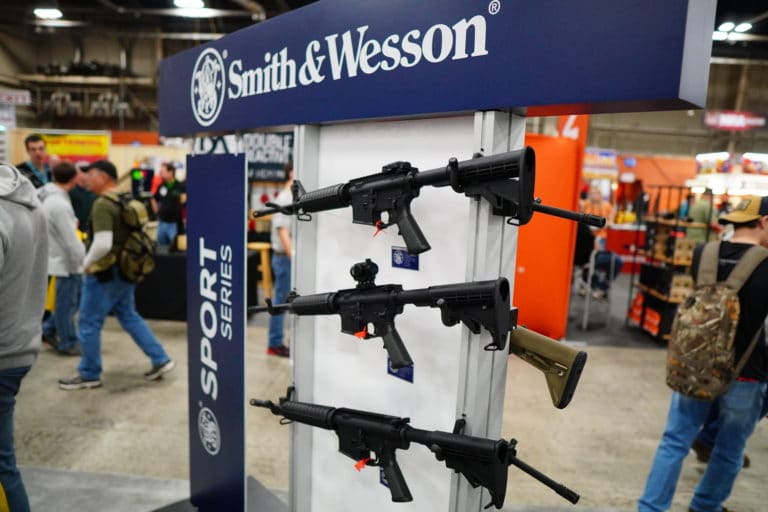This week, the courts cast more doubt on the constitutionality of “assault weapons” bans.
Hot on the heels of a bit of a resurgence in the political prospects of the bans, culminating in the House of Representatives passing the first one in decades, their legal prospects took a nosedive. On Tuesday, a Biden appointee blocked Boulder County, Colorado’s ban on AR-15s and similar rifles. That came shortly after an Obama appointee did the same to Superior, Colorado’s ban.
Both federal judges cited the Supreme Court’s new Bruen standard, which requires gun laws to be rooted in early American tradition to survive scrutiny, as the basis for their rulings.
“The conduct regulated by this provision of the Amended Code, the right to possess, sell, or transfer illegal weapons, (which, as defined, include weapons commonly used by law-abiding citizens for lawful purposes), is covered, at least in part, by the Second Amendment, and therefore that conduct is presumptively protected,” Judge Raymond Moore wrote of Superior’s ban.
Even lower court judges who seem inclined to sympathize with the goals of AR bans may now feel obligated to strike them down.
“The Court is sympathetic to the Town’s stated reasoning,” Moore wrote. “However, the Court is unaware of historical precedent that would permit a governmental entity to entirely ban a type of weapon that is commonly used by law-abiding citizens for lawful purposes, whether in an individual’s home or in public.”
Now all of the local AR bans in Colorado are on hold with an agreement to consolidate the cases against them. The bans in California and Maryland may well be next.
Moreover, nobody seems to have formulated a coherent defense of AR bans under the Bruen standard. Neither of the Colorado jurisdictions filed an opposition brief to the requests for a temporary restraining order. Maryland hasn’t submitted its defense yet.
California has filed a response in Miller v. Bonta, the suit against its ban. However, it doesn’t actually attempt to defend the law. Instead, it asks for more time to develop a defense.
“This analysis should not be rushed,” California wrote in its brief. “Although Defendants cannot provide a precise estimate of how much time would be needed to conduct a thorough identification and review of source materials, at a general level, a historian conducting original research on primary-source materials would fairly expect to conduct many hours of work to yield several sentences of written historical analysis.”
California asserts an argument. It’s the one you’d expect if you’ve read the Heller and Bruen cases: the “dangerous and unusual weapons” exception the Court has identified. California argues AR-15s and the other guns it bans fit in that exception. However, they don’t identify any actual laws that could be considered historical analogues to their ban. Instead, it asks for more time to find some.
“Here, California has strong arguments as to why its restrictions on assault rifles are constitutional under that test: Bruen repeats Heller’s assurance that States may regulate access to ‘dangerous and unusual weapons’ consistent with the Second Amendment,” the state said. “And further discovery will allow Defendants to develop a record on how the AWCA imposes a ‘comparable burden on the right of armed self-defense’ as historical restrictions and that the modern and historical regulations are ‘comparably justified.'”
That’s a bit odd. It feels a lot like a stalling tactic. A doomed one at that since the case is back in front of Judge Roger Benitez, who previously struck it down along lines similar to the analysis Bruen now requires.
After all, it’s not that hard to find some historical bans on “dangerous and unusual weapons.” If you’re going to argue AR-15 bans fit into historical bans on some kinds of weapons, you could at least start with the archive Duke University has put together. That’s the point of the database, and there are some examples in there.
Of course, those examples don’t look very much like a ban on the most popular rifle in the country. Mostly, the ones from the relevant period before the adoption of the 14th Amendment involved bowie knives or bans on carrying weapons in a way meant to cause terror. Nothing in that database is nearly as expansive as these “assault weapons” bans.
But that’s why California wants to keep looking. Or, perhaps, they’re merely waiting for a more favorable court to present the weaker analogues and hope they’ll be enough. They’re unlikely to back down.
The same goes for Boulder, Colorado. They said they don’t plan to give up on defending the law.
“At the hearing, the county will demonstrate that its assault weapons ordinance is constitutionally sound,” Gloria Handyside, a spokesperson for the county, told The Reload on Tuesday.
“Assault weapons” bans aren’t anything new, though. So, it seems unlikely a new example of a historical analogue will materialize in the nick of time to save these laws from being struck down.
It’s much more likely the era of the “assault weapon” ban is over.






